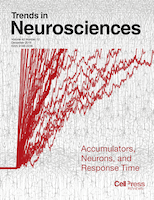
BRAIN PATHOLOGY
Scope & Guideline
Shaping the Future of Neurology and Neuroscience
Introduction
Aims and Scopes
- Neurodegenerative Diseases:
Research often explores the molecular and cellular mechanisms underlying neurodegenerative diseases such as Alzheimer's, Parkinson's, and amyotrophic lateral sclerosis (ALS). This includes studies on proteinopathies, synaptic dysfunction, and neuroinflammation. - Tumor Pathology:
A significant focus is placed on brain tumors, including gliomas and meningiomas, with an emphasis on histopathological classification, molecular profiling, and prognostic factors. The journal highlights advances in diagnostic approaches and treatment strategies. - Neuroinflammation and Immune Response:
The journal addresses the role of neuroinflammation in various neurological conditions, examining the interplay between the immune system and neural cells, and how these interactions contribute to disease progression. - Advanced Imaging and Diagnostic Techniques:
BRAIN PATHOLOGY publishes studies utilizing cutting-edge imaging technologies and molecular diagnostics, including MRI, PET scans, and next-generation sequencing, to enhance disease classification and understanding. - Genetic and Epigenetic Factors:
Research on genetic mutations, epigenetic modifications, and their contributions to brain pathology is prominent. This includes investigations into hereditary conditions, tumor genetics, and the role of environmental factors. - Clinical Correlation and Biomarkers:
The journal emphasizes the importance of correlating clinical findings with pathological data, aiming to identify biomarkers for early diagnosis and prognosis of neurological disorders.
Trending and Emerging
- Multi-Omics Approaches:
Recent studies increasingly employ multi-omics strategies, integrating genomics, transcriptomics, and proteomics to provide comprehensive insights into brain pathologies, facilitating the discovery of novel biomarkers and therapeutic targets. - Artificial Intelligence in Diagnostics:
There is a surge in the application of artificial intelligence and machine learning techniques for diagnostic purposes, particularly in analyzing histopathological data and imaging, enhancing accuracy and efficiency in disease classification. - Neurovascular Contributions to Disease:
Emerging research highlights the role of neurovascular dysfunction in neurodegenerative diseases and brain tumors, focusing on how vascular health impacts neuronal integrity and pathology. - Microbiome-Brain Interactions:
An increasing number of studies are exploring the relationship between the gut microbiome and brain health, investigating how microbial factors may influence neuroinflammation and neurodegeneration. - Therapeutic Targeting of Inflammation:
There is a growing interest in targeting neuroinflammatory pathways as potential therapeutic strategies for various neurological disorders, with research focusing on the modulation of immune responses in the brain. - Longitudinal Studies and Biomarker Development:
There is an emerging trend towards longitudinal studies that track disease progression over time, aiming to identify early biomarkers and therapeutic windows for intervention in neurodegenerative diseases.
Declining or Waning
- Traditional Histopathology:
There appears to be a waning focus on traditional histopathological techniques without molecular integration. As the field moves towards more advanced molecular and imaging techniques, basic histopathological studies are becoming less prominent. - Single Disease Focus Studies:
There is a noticeable decline in studies that focus solely on single disease entities without considering comorbidities or overlapping pathologies. The trend is shifting towards a more integrated approach that examines multiple conditions. - Animal Models in Isolation:
While animal models remain crucial for research, there is a reduced emphasis on studies that do not translate findings to human pathology or clinical applications, indicating a desire for more clinically relevant research.
Similar Journals

Molecular Brain
Connecting Minds through Open Access Neuroscience ResearchMolecular Brain is a prestigious open-access journal published by BMC, dedicated to advancing the field of neuroscience with a particular focus on cellular and molecular mechanisms. Since its inception in 2008, the journal has been committed to disseminating high-quality research that explores the intricate workings of the brain, particularly in areas related to cellular and molecular neuroscience. Located in the heart of London, England, Molecular Brain has garnered significant recognition in the academic community, boasting a 2023 categorization in the Q2 quartile for both Cellular and Molecular Neuroscience and Molecular Biology, reflecting its growing influence and relevance in these fields. With its Scopus ranks placing it in the top 32% and 38% of its respective categories, the journal serves as an essential platform for researchers, professionals, and students alike, encouraging collaboration and knowledge-sharing through its accessible online format.

VIRCHOWS ARCHIV
Connecting Researchers to the Heart of Pathological ScienceVirchows Archiv, published by Springer, is an esteemed journal dedicated to the fields of Medicine and Pathology, featuring high-quality research from various domains including Cell Biology and Molecular Biology. With its inception dating back to 1947, Virchows Archiv has been a pivotal platform for advancing the understanding of pathological and forensic medicine. As evidenced by its impressive Scopus rank, placing it within the top 15% of journals in Pathology and Forensic Medicine, it continues to maintain a strong presence with a Q1 classification in its category as of 2023. Although it does not offer Open Access options, the journal remains critical for researchers and professionals seeking to publish and access pioneering findings that can impact clinical practices and the academic community. The journal’s rigorous peer-review process ensures that only the highest quality research is disseminated, making it an essential resource for those engaged in the ever-evolving fields of health and biological sciences.

Turkish Neurosurgery
Empowering Practitioners with Cutting-Edge InsightsTurkish Neurosurgery is a distinguished journal published by the TURKISH NEUROSURGICAL SOC, dedicated to advancing the field of neurosurgery and clinical neurology. With an ISSN of 1019-5149 and converging its focus from 1990 to 2024, this regional journal aims to bridge the gap in knowledge dissemination within Turkey and beyond. It holds a notable position in the academic community, categorized in the Q3 quartile for both Neurology (clinical) and Surgery in 2023, illustrating its relevance in these critical fields. Although currently not an open-access publication, it offers insights and research findings that are vital for researchers, practitioners, and students who seek to stay abreast of developments in neurosurgical practices. Located in Ankara, Turkiye, Turkish Neurosurgery provides a platform for sharing rigorous research that enhances clinical outcomes and informs surgical techniques, thus playing a crucial role in elevating the standards of neurosurgery in the region.

Indian Journal of Pathology and Microbiology
Fostering Collaboration in Pathology and MicrobiologyIndian Journal of Pathology and Microbiology, published by Wolters Kluwer Medknow Publications, is a distinguished open-access journal that has been fostering knowledge dissemination in the fields of pathology and microbiology since 2008. With an ISSN of 0377-4929 and E-ISSN 0974-5130, this journal serves as a critical resource for researchers and practitioners committed to advancing their understanding of medical sciences in India and beyond. Spanning decades of valuable research contributions since its establishment in 1972, it provides a platform for peer-reviewed articles that explore current trends and innovations in medicinal pathology and microbiological studies. Although it holds a Q4 ranking in categories such as medicine and microbiology, it maintains a notable Q3 classification in pathology and forensic medicine, highlighting its relevance to contemporary scientific discussions. Accessible freely to a global audience, the journal plays a pivotal role in enhancing scholarly communication and collaboration, making it an indispensable tool for students, professionals, and researchers alike aiming to contribute to this evolving discipline.

Journal of Pathology Clinical Research
Championing Open Access to Pathological KnowledgeThe Journal of Pathology Clinical Research is a prestigious academic platform published by WILEY, dedicated to advancing the field of pathology and forensic medicine. Since its inception in 2015, this Open Access journal has championed the dissemination of cutting-edge research relevant to both clinical practice and laboratory science, allowing for greater visibility and accessibility to researchers, professionals, and students worldwide. With a robust Q1 ranking in the Pathology and Forensic Medicine category for 2023, it stands as a critical resource for those seeking to stay at the forefront of the field, currently positioned at rank #29 out of 208 according to Scopus metrics, placing it in the 86th percentile. The journal's commitment to high-quality peer-reviewed articles fosters an environment of scholarly exchange that is essential for innovation and professional growth in pathology and forensic studies. Researchers and practitioners alike are encouraged to contribute and engage with a community dedicated to excellence in clinical research.

ADVANCES IN ANATOMIC PATHOLOGY
Leading the Charge in Anatomical Advancements.ADVANCES IN ANATOMIC PATHOLOGY is a leading peer-reviewed journal dedicated to the field of anatomical pathology, published by LIPPINCOTT WILLIAMS & WILKINS. With an impressive impact factor and consistent ranking in the Q1 category for both Anatomy and Pathology and Forensic Medicine, it serves as an essential resource for researchers, clinicians, and students alike. The journal has been a critical platform for disseminating significant findings and advancements in the discipline since its inception in 1996, boasting Scopus rankings of #1 in Anatomy and #11 in Pathology. While it does not provide open access, it maintains rigorous standards in the selection of articles, ensuring that published research reflects the latest developments and techniques in the field. As we look toward 2024 and beyond, ADVANCES IN ANATOMIC PATHOLOGY remains committed to advancing the science of pathology, fostering innovation, and enhancing clinical practice through impactful research.

Annual Review of Neuroscience
Empowering Neuroscience Through Comprehensive ReviewsThe Annual Review of Neuroscience, published by Annual Reviews, is a premier journal that has been at the forefront of neuroscience research since its inception in 1978. With an ISSN of 0147-006X and E-ISSN 1545-4126, this leading academic journal boasts a remarkable impact factor, placing it in the prestigious Q1 category in Neuroscience (miscellaneous), with an impressive Scopus ranking of 4 out of 113 and a stellar 96th percentile in general neuroscience. Focused on publishing comprehensive and authoritative review articles, the Annual Review of Neuroscience aims to synthesize and critically evaluate the latest advances in the field, making it an indispensable resource for researchers, professionals, and students alike. While it does not offer open access, the insights and discoveries highlighted in its issues are crucial for those dedicated to understanding the complexities of the nervous system and driving forward innovative research. With a commitment to excellence and a forward-looking perspective, this journal continues to shape and influence the future of neuroscience.

NATURE NEUROSCIENCE
Illuminating the Complexities of the Nervous SystemNATURE NEUROSCIENCE is a premier journal published by NATURE PORTFOLIO, focusing on cutting-edge research in the field of neuroscience. With an esteemed impact factor that reflects its significance in the academic community, this journal occupies an exceptional place in the 2023 Q1 category for neuroscience (miscellaneous) and boasts a leading Scopus rank of #1 out of 113 in general neuroscience, placing it within the top 1st percentile. Since its inception in 1998, NATURE NEUROSCIENCE has consistently delivered high-quality, peer-reviewed articles that contribute to our understanding of the nervous system, driving innovation and scholarship across disciplines. Although it does not offer open access, the journal remains a vital resource for researchers, professionals, and students seeking to stay at the forefront of neuroscientific discovery and discussion. Its editorial commitment to excellence ensures that it continually shapes the trajectory of neuroscience research well into 2024 and beyond, making it an indispensable asset for anyone passionate about the brain and its complexities.

TRENDS IN NEUROSCIENCES
Leading the Charge in Neuroscience InnovationTRENDS IN NEUROSCIENCES, published by CELL PRESS, is a leading journal in the field of neuroscience, offering cutting-edge insights and important developments in the rapidly evolving landscape of brain research. With an impressive Impact Factor and ranking in the top quartile (Q1) of the category for Neuroscience (miscellaneous), it is positioned as a vital resource for researchers and professionals seeking to stay abreast of the latest discoveries and trends from 1978 to the present. Specifically ranked #3 out of 113 in General Neuroscience by Scopus, this journal promotes the interdisciplinary exchange of ideas and knowledge, making it an essential platform for students and experienced scholars alike. Although it is not an Open Access journal, its value lies in its rigorous peer-review process and commitment to maintaining the highest standards of academic integrity. By continuing to explore the complexities of neural processes and behavior, TRENDS IN NEUROSCIENCES plays a crucial role in shaping the future of neuroscience research and education.

Journal of Central Nervous System Disease
Transforming research into solutions for CNS diseases.Welcome to the Journal of Central Nervous System Disease, a premier Open Access publication dedicated to advancing the understanding of neurological disorders and their underlying mechanisms. Published by SAGE Publications Ltd, this esteemed journal has been serving the scientific community since 2009 and is committed to disseminating high-quality research that spans from clinical neurology to cellular and molecular neuroscience. With an impressive impact factor, the journal ranks within the top quartiles—Q2 in both Neurology and Clinical Neurology, and Q3 in Cellular and Molecular Neuroscience as of 2023. The journal's indexing in Scopus reflects its significant contribution to the field, being ranked #83 out of 400 in clinical neurology and #38 out of 97 in cellular and molecular neuroscience. This essential resource, based in the United States, is crucial for researchers, clinicians, and students looking to stay at the forefront of neurological science. By providing Open Access options, we ensure that groundbreaking research is readily available to a global audience, fostering collaboration and innovation in the study of central nervous system diseases.